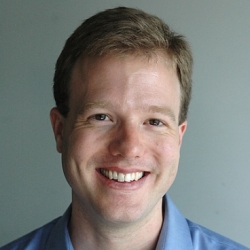Apr 16 2010
Scott Manalis, a member of the David H. Koch Institute for Integrative Cancer Research of MIT and associate professor of biological engineering at the MIT, led a team of Harvard and MIT researchers who pioneered a measurement system that has the ability to measure precisely the mass of cells during their growth in a period of time. The time period for this experiment was between 5 and 30 min. The Nature Methods journal has reported this development in its April 11, 2010 edition.
 MIT's Scott Manalis
MIT's Scott Manalis
The team used a cell mass sensor that incorporated a fluid-filled micro-channel and was initially demonstrated in 2007 by Manalis. This microchannel is etched inside a miniature slab of silicon, which vibrates in a vacuum. This vibration frequency undergoes a minor transformation whenever the cells flow one by one in the channel. This frequency change data is used to determine the cell mass, with a resolution that is as little as a femtograms. This is lower than the 0.01% of the percent lymphoblast cell’s weight in the solution. Methods adopted in the past to measure the growth rates of cells were not accurate enough to highlight single-cell based growth models. These earlier methods were based on measurements of length or volume. From the earlier experiments, it was also not clear whether the cell grew in exponential or linear fashion. According to Manalis, the difference between exponential and linear growth curves of most of the propagating cells is found to be less than 10% across the twofold range size. Manalis clarifies that the precision level of the measurement has to be lesser than this.
Manalis and his student associates are using the fluorescent molecules to tag the proteins to determine the current stage of the cell cycle. This will enable the team to correlate the cell-cycle position and the cell size and finally develop a model for mammalian and yeast cells growth. The team is focusing on a process that would help them to add chemicals to the fluid in the microchannel for studying their effect on the cell growth rates. These chemicals include antibiotics, nutrients, and cancer dugs.
A strain of mammalian lymphoblasts that are the white blood cells’ precursors and yeast, and two bacterial strains B. subtilis and E. coli were the cell types that were examined by the researchers. These researchers demonstrated that the B. subtilis cells seemed to expand in an exponential manner, while no definite proof was observed in E. coli’s rate of growth. The research paper’s co-lead author and the Manalis’ lab’s grad student Francisco Delgado attributed this result to the large individual cell growth variation among similar mass cells of E. coli.
A method to capture the cell in the micro-channel was developed by the paper’s co-lead author and the Manalis’ lab’s ex-doctoral associate, Michel Godin. By accurately coordinating the direction of flow of the cells, Godin was able to trap the cells. This method empowers the researchers to measure a single cell when the cell is made to move through the channel repeatedly every second.
These researchers utilized a sensor that is able to accurately weigh cells for measuring the rate of mass accumulation of single cells. This accomplishment will highlight the manner in which cells are able to control their growth and also the reasons for failure of such controls in cancer cells. The research team disclosed that the growth rates of individual cells vary to a large extent. The team could also prove that these cells exhibit exponential growth, implying that their growth pace gets higher as they grow larger.
The Harvard Medical School’s professor of systems biology and author of the paper published by Nature Methods, Marc Kirschner informed that these researchers would be able to devise a method for understanding the relation between cell division and cell growth using this technique. Kirschner further elaborated that some type of mechanism is needed for controlling cell growth, if the growth is in an exponential manner and if there were no such control the bigger cell in every new generation will grow quicker than a cell of smaller size, whenever these cells are further subdivided into daughter cells of slightly differing sizes, which often happens, resulting in cells of inconsistent sizes. On the other hand, these cells are found to be of equal sizes ultimately, using a methodology that is not yet known to the biologists.
Rockefeller University’s professor Fred Cross, who is analyzing the cycle of the yeast cell, explained that this system is able to measure the biomass directly, or the overall biomass having a density more than that of water, which is made possible by an expert maneuver to position one cell on a scale effectively. The inaccuracies and ambiguities that are usually present in earlier more indirect mode of measurements do not affect this system, according to Cross.